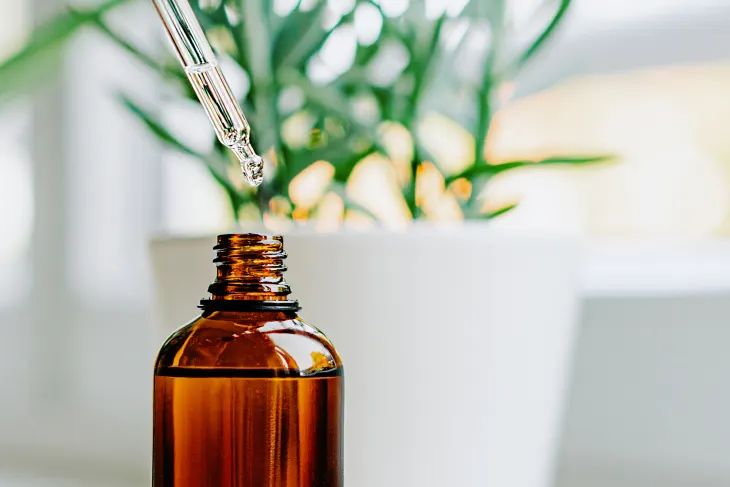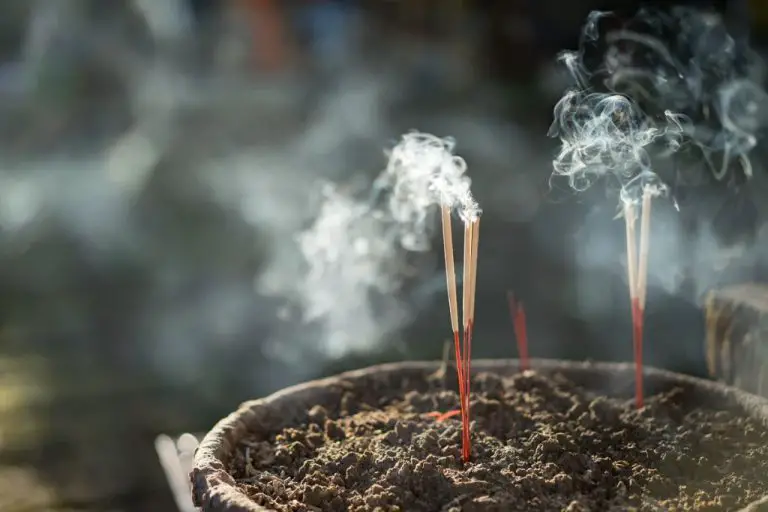What Essential Oils Make A Musk Scent?
Musk is a class of aromatic substances commonly used in perfumery. The musk scent is described as rich, smooth, sweet, and sensual. Though musk originally came from the musk deer, most musk used in perfumery today is synthetic or derived from plants.1
Certain essential oils can provide a musky fragrance resembling the animalic musk. The essential oils that are most commonly used for their musk-like aromas include angelica root, ambrette seed, costus root, oakmoss, patchouli, and saffron.2 This article will explore these essential oils and how they can create a musk scent.
1 https://www.amazon.com/Freshener-Fresheners-Fragrance-Eliminator-Refreshers/dp/B09KZCLGGN
2 https://www.amazon.ae/itr/s?k=itr
Musk Deer
Musk deer, originating in Asia, have a gland located in their abdomen that produces a thick substance known as musk. This musk has a very powerful odor that the deer use to mark their territory and attract mates. The main active compound in musk deer gland secretions is called muscone. Muscone has an intensely animalistic, fecal-like scent that is quite distinct and long lasting. Traditional perfumers have prized deer musk for centuries, using small amounts of the raw secretion to add depth and mystery to perfume compositions. However, due to the decline in musk deer populations from over-hunting, natural deer musk is now quite rare and prohibitively expensive. Most modern perfumery utilizes synthetic versions of muscone to try to replicate the unique odor profile of real deer musk.

For more information, see this source: [1]
[1] https://en.wikipedia.org/wiki/Deer_musk
Synthetic Musk
Synthetic musk compounds were discovered in the late 19th century as chemists sought to recreate the scent of natural musk in the lab. The first synthetic musk, musk baur, was accidentally discovered by Swiss chemist Albert Baur in 1888 (1). Synthetic musks quickly became popular ingredients in perfumery, allowing fragrances to replicate the musky notes of expensive natural musk without using animal products (2). Major classes of synthetic musks include nitro musks, polycyclic musks, and macrocyclic musks. Nitro musks like musk ketone were the dominant early synthetics, but later fell out of favor due to toxicity concerns. Polycyclic musks like Galaxolide became more prevalent in the 1970s-1990s. Macrocyclic musks were introduced in the 1980s and remain popular today as greener alternatives.
Angelica Root
Angelica root comes from the Angelica archangelica plant, a biennial herb that grows wild in parts of Europe and Asia. The rhizome and roots contain volatile oil, mono and sesquiterpenes, and coumarins that give it a distinct earthy, musky aroma (Source). When distilled into an essential oil, angelica root has deep, woody, balsamic notes that are commonly described as musky or earthy. Its fragrance profile makes it a popular ingredient in musk-type perfumes and colognes (Source).
Compared to other essential oils like ambrette seed or costus root, angelica root has one of the truest musk-like aromas. Its complex scent contains exotic nuances of herbs, pine, and spicy medicinals along with its predominant musky character (Source). These rich, deep notes make angelica root essential oil an excellent natural alternative to synthetic musk in cosmetic and perfume applications.
Ambrette Seed
Ambrette seed essential oil comes from the seeds of Hibiscus abelmoschus, an evergreen shrub native to India and parts of Asia and Africa. The seeds contain a musky, earthy scent reminiscent of true musk deer scent (source). The seeds produce an essential oil that has been used as a botanical alternative to animal-derived musk in natural perfumes and scents for centuries.
Ambrette seed essential oil provides a woody, earthy, and slightly floral aroma that is similar to musk. It offers a more ethical and sustainable way to achieve a musky fragrance compared to using synthetic musk or animal-derived musk. The oil is gentle, soothing, and safe to use in skin care and perfumery (source). Unlike true deer musk, ambrette essential oil does not contain harsh animalic notes and has a softer, more floral musk profile.
Costus Root
Costus root oil comes from the costus plant (Saussurea costus), which is a tall perennial plant native to India. The plant has smooth shiny leaves and bright red flowers. Extracts from the roots of the costus plant have a distinctive warm, musky aroma with sweet woody undertones.
According to Vigon International, costus essential oil contains complex molecules that give it an “animalic earthy” scent profile reminiscent of deer musk and orris. The main chemical constituent responsible for the musky odor is p-methoxybenzaldehyde.
Costus root oil has been used for centuries in perfumery for its sensual musk aroma. When diluted and applied to skin, the oil elicits a musky body odor redolent of soft warmth. The rich, sweet scent makes costus oil perfect for creating musk perfume accords and sensual massage oils.
Oakmoss
Oakmoss is a type of lichen that grows commonly on oak trees and has a rich, earthy, musk-like fragrance. It has been used in perfumery for over a century and is considered a base note that helps provide depth and staying power to a fragrance.
Oakmoss has an intense green, woody aroma that has been described as forest-like and mossy but also slightly sweet. The fragrance is evocative of the outdoors and has been utilized in numerous masculine, feminine, and unisex perfumes. Popular fragrances containing oakmoss include Chanel No. 5, Fahrenheit, Miss Dior, and Aramis.
The main chemical constituents of oakmoss are atranol and chloroatranol which provide its deep, rich musky notes. However, these components have been found to cause skin sensitization and oakmoss extracts with reduced levels of these compounds are now used in fragrances. When processed appropriately, oakmoss can provide an earthy base to perfumes, soaps, candles, and other scented products (Source).
Patchouli
Patchouli (Pogostemon cablin) is a perennial herb plant native to tropical regions of Asia, including India, Malaysia, Indonesia, and the Philippines. The oil is extracted from the fragrant leaves of the plant. Patchouli essential oil has an earthy, musky aroma that is both exotic and calming. According to
https://www.patchouli.co.in/blog-patchouli-India/
, the patchouli plant was brought to Europe in the 1800s and became associated with the hippie culture of the 1960s. However, patchouli oil has been used for centuries in traditional Asian medicine and incense, as well as perfume. The musky notes of patchouli oil make it an excellent base for musky perfumes and blends. When combined with sweet or citrusy essential oils, the earthy aroma of patchouli is softened into a sensual musk.
Saffron
Saffron is a spice derived from the flower of the saffron crocus (Crocus sativus) plant. The dried stigmas of the saffron flower are used to make saffron spice. Saffron has a hay-like fragrance with notes of honey and metals. It contains an aroma chemical called safranal that gives it a distinctive musky, earthy scent.1
Saffron essential oil is steam distilled from the dried saffron stigmas and contains the musky fragrance compounds of the saffron flower. It has a rich, floral aroma with a medicinal, spicy undertone. The musky notes come from the saffron’s natural safranal content. Saffron oil is used in perfumery for its unique musk profile that provides an exotic, mysterious fragrance. It blends well with other musk, amber and spice oils.
Conclusion
In summary, there are several essential oils that contribute a musky fragrance. These include angelica root, ambrette seed, costus root, oakmoss, patchouli, and saffron. While musk deer gland was traditionally used, synthetic versions are now more common due to ethical concerns.
When using essential oils with a musky scent, start with small amounts as they can be quite potent. Blend them with lighter floral or citrus oils to soften the intensity. The rich, earthy aroma of musk oils pairs well with sandalwood, cedarwood, vanilla, and rose. They help create warm, sensual perfumes and colognes. Use musk oils sparingly and avoid skin contact, as some can be sensitizing. With careful use, essential oils containing musky compounds can add a mysterious depth and allure to your homemade fragrance blends.



